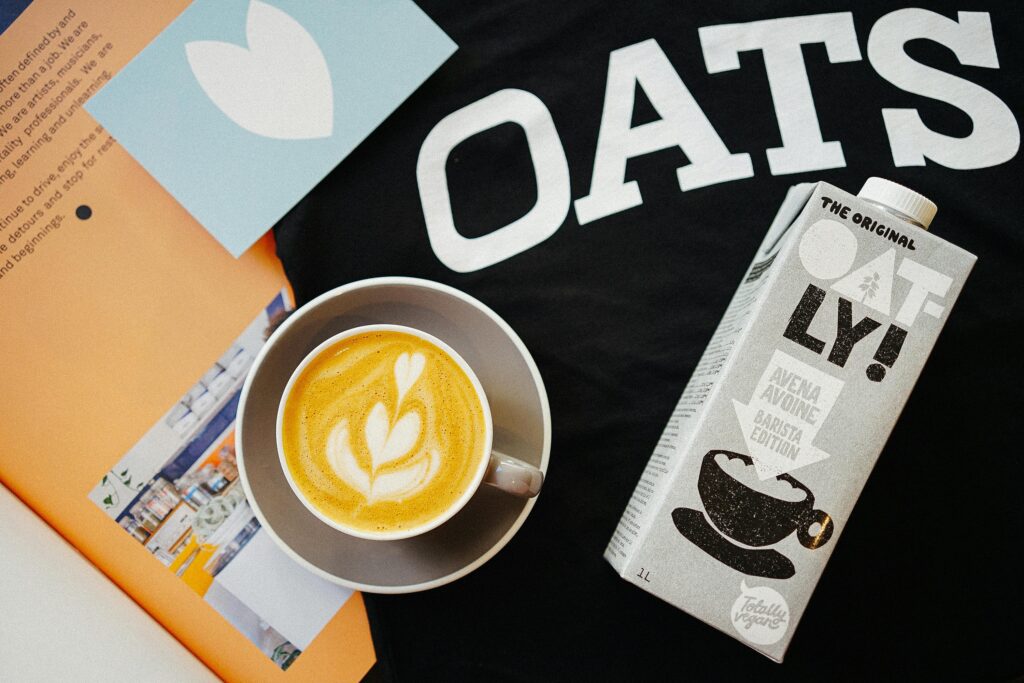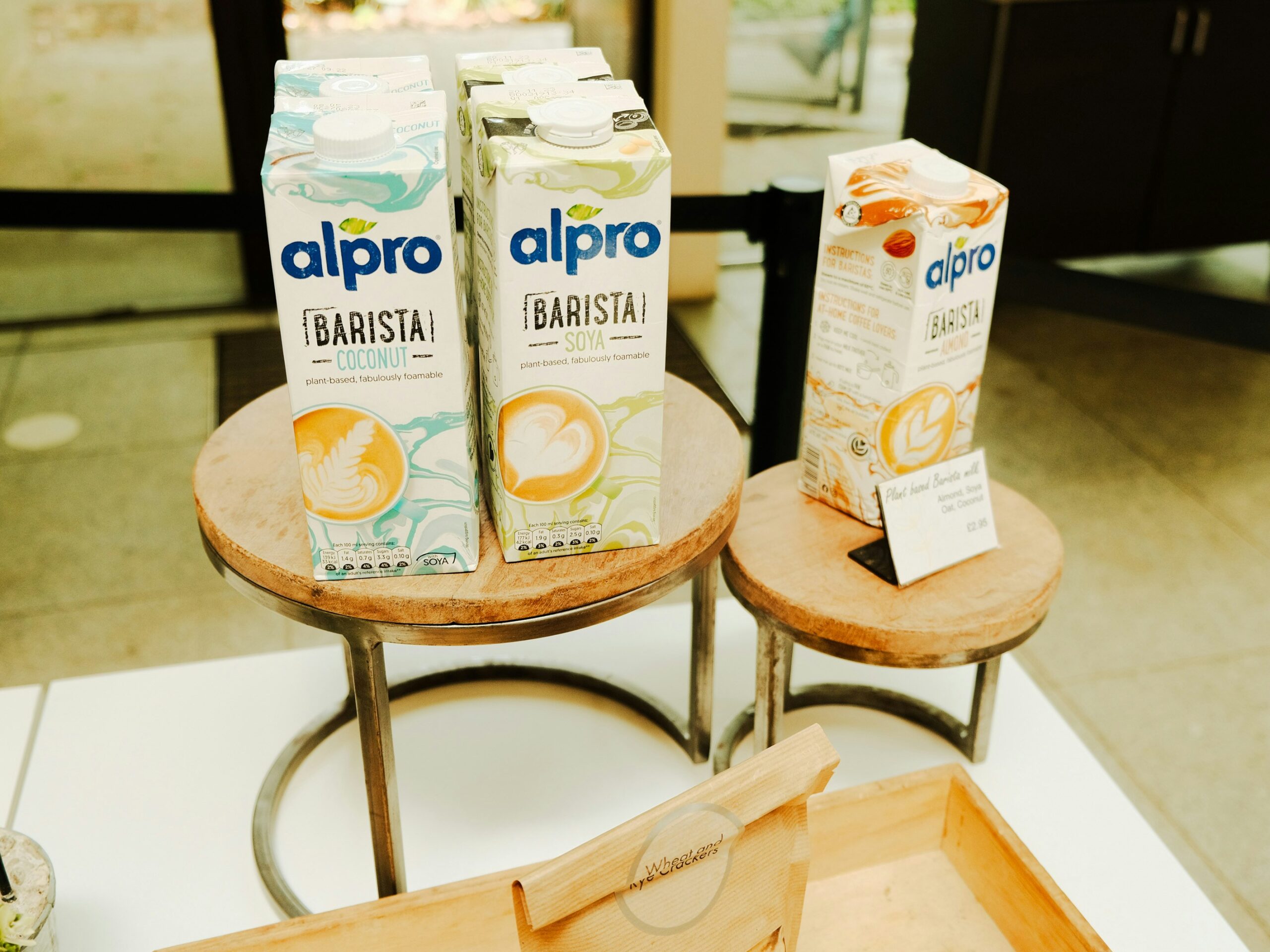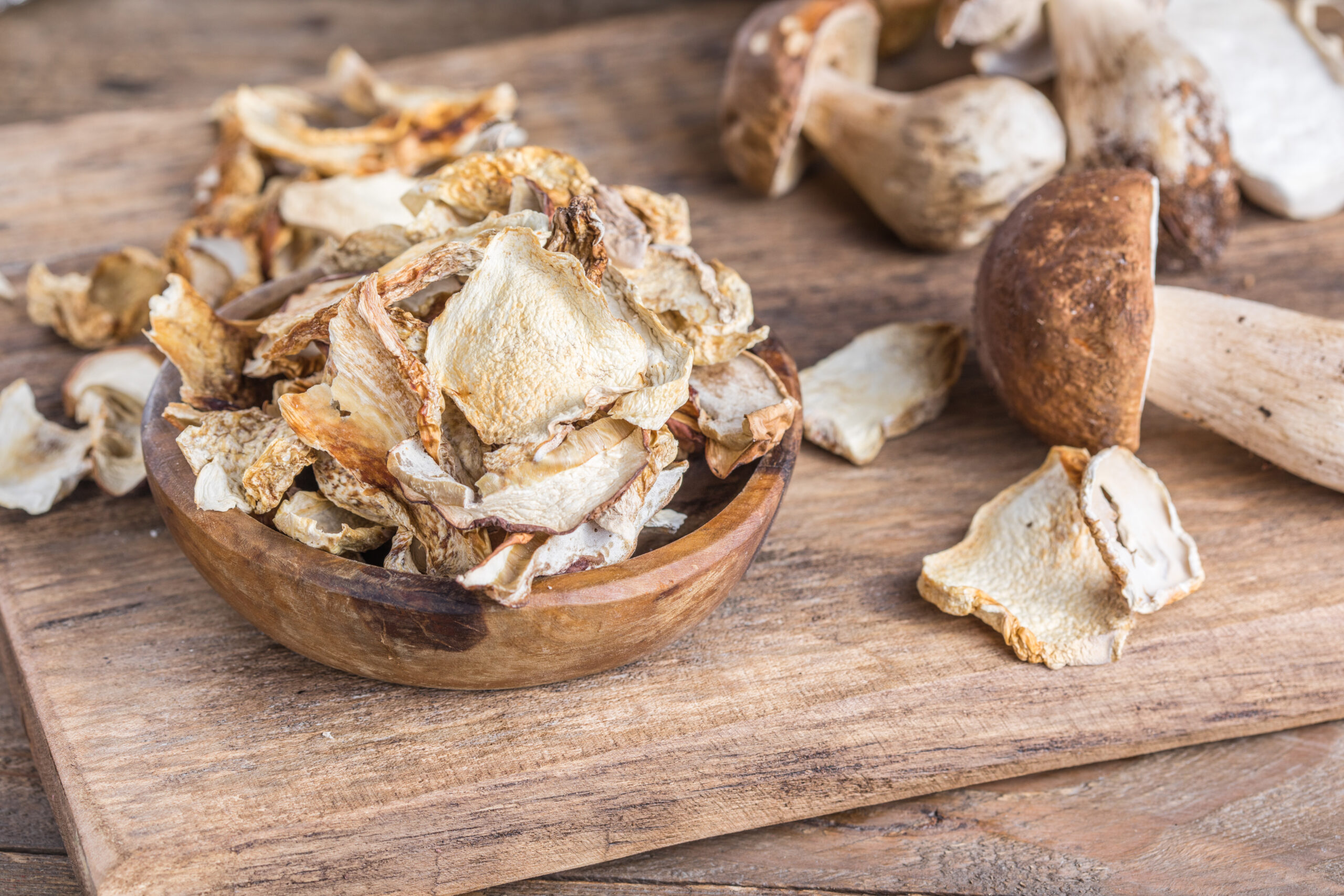Learn from the success of non-dairy and optimize your plant-based product sales
Step into any supermarket and you’re sure to see plant-based milk products stacked high on shelves – in both the chilled and long-life milk aisles – alongside other ‘milk’ products.
It’s hard to ignore the category’s success. Plant-based milk has not only made its way into our supermarkets, but into food service venues, hotels, schools, and homes around the world.
Unsurprisingly, in Europe, plant-based milk is the most purchased category in plant-based food and drink and has both the highest market value and penetration.1
But how did non-dairy milk become the unsuspecting sector leader? And what can other plant-based categories learn from it?
This article will break down the plant-based milk market, sharing insights that can be applied to other plant-based categories. Let’s replicate plant milk’s success!
A snapshot of the plant-based milk sector
Worth: In 2024, the non-dairy milk market is worth an estimated USD 5.60 billion. By 2029, it is expected to reach USD 10.96 billion, growing at a compound annual growth rate (CAGR) of 14.38% (2024-2029).2
Plant-based share: Of the European plant-based industry, ‘milk’ is expected to hold a share of 66.8%.3
Market leaders: Germany, Spain, and the UK lead the market by revenue,4 with Germany holding a 22.8% value share in 2024.5
Off-trade channels: The largest growing market for plant-based milk by distribution channel is off-trade, including supermarkets, hypermarkets, convenience stores, online retailers, and speciality food stores. As European consumers continue to increase their use of these venues, and as the presence of online retailers grows, the off-trade segment is expected to rise significantly. Off-trade also has the largest value share of the plant-based milk market, at 97.79%.6
On-trade channels: Currently, on-trade channels for plant-based milk in Europe are in the nascent stage. Consumers prefer plant-based milk at home and are less likely to drink from a restaurant or food service outlet (due to the limited availability of plant-based milk and the additional cost that choosing it can incur). On-trade channels acquired less than 3% of the value share in 2022 compared to off-trade channels.7
Consumer preference: Oat, soy, and almond milk lead the overall plant-based market in Europe in 2024. With different regions having different preferences. For example, in Germany, oat comes out on top, with 75% of non-dairy milk consumers making it their go-to.8 Nearly 54% of European consumers prefer plant-based milk to traditional animal-based milks.9
How plant-based milk became king
An innovation leader:
- Plant milk producers are raising the bar for product innovation and sustainable ingredient sourcing, working with new and functional ingredients to create products that appeal to varying consumer interests,10 offer novel experiences, and satisfy the desire for tasty ‘milk’ products. A wide variety of ingredients are being harnessed to create these new products, including soy, oat, rice, coconut, flax, hemp seeds, pea protein, upcycled barley, potato starch, cassava root, hazelnuts, and more. Excitingly, the process used for producing alt-milks can liquify nutrients from an array of plant-based sources, meaning the variants and blends of plant-milks are virtually limitless.11
Prioritizes consumer drivers:
- Consumers are becoming increasingly interested in products that can improve their health and offer a more sustainable option. Fortified plant-based milk products are not only healthier than traditional animal-based dairy products, boasting high nutrients and a lower fat content and calories, but they also have a much lower impact on the environment. Brands like Oatly use clever marketing strategies to make the health and sustainability benefits of their products clear to consumers, encouraging them to give oats a try.

Easily available and accessible:
- Plant-based milk products can be found across Europe, in almost all leading retailers. The off-trade channel has grown significantly due to the growing availability of non-dairy milk, the wide selection of brands stocked (and private labels), the considerable shelf space allocated to products, and frequent price promotions.
High familiarity:
- Familiarity is key to growth and consumption – people are more likely to buy something if they already know about it. In Germany, for example, the leading market for non-dairy milk in Europe, many consumers are already familiar with plant-based milk. This constitutes the high market value and consumer uptake in the country (93% of consumers in the country already buy plant-based milk alternatives – higher than in any other plant-based product category!12). But it’s not just Germany – worldwide, plant-based milk is no longer consumed exclusively by vegans; it’s become a staple for households of all dietary choices (nearly 54% of European consumers prefer it to dairy milk13). Over the years, many consumer awareness and education campaigns have centered on plant-based milk and its benefits. Brands also educate consumers using their product packaging, with helpful facts about their products and health and environmental advantages. It’s also important to note that plant milk has a long history, stemming back to the first century,14 which likely adds to consumer familiarity.
Integrated-segregated merchandising:
- Plant-based milk products are often merchandised using the integrated-segregated technique. Instead of positioning plant-based milk products in a separate ‘vegan’ aisle, they are positioned in the ‘dairy’ or ‘milk’ aisle, near dairy milk products but next to other plant-based milk products. This merchandising ‘nudge’ takes plant-based milk products to where a higher potential of shoppers are, familiarizes shoppers with the products and normalizes their being alongside and on a par with animal-based. It also demonstrates their utility and makes it as easy as possible for consumers to find and access them.

Plant-based milk brands are great self-promoters:
- Think of some of the leading plant-based milk brands sold in Europe – Oatly, Alpro, Califia Farms, and Silk, along with some of the emerging challenger brands, like Minor Figures and Rude Health. Most of these have really strong branding and marketing behind them. Oatly is a great example; they’ve curated a loyal community of plant-based milk fans using clever and tongue-in-cheek promotional campaigns and have fun, witty branding. They also regularly feature their adverts in public settings, like train stations, and on billboards. All this has enabled Oatly to become a familiar, personable, and popular brand amongst people of all dietary choices.
What we can learn from plant-based milk
Actionable insights for alt-protein businesses
Take inspiration from the success of plant-based milk, using similar approaches in your specific category. ProVeg makes the following recommendations to alternative protein businesses looking to boost their plant-based sales:
- Seize the innovation challenge – Collaborate with ingredient providers and manufacturers to create novel offerings that cater to diverse consumer interests. Exploring functional ingredients, sustainable sourcing, and unique blends can pave the way for captivating new products that stand out in a competitive market.
- Partner with as many stockists as possible – Get your product into as many off-trade and on-trade settings as possible, so that it is available and accessible to consumers. Curate strong relationships with stockists and other partners to maximize benefits.
- Use strategic merchandising for visibility – Wherever they are stocked, make sure your products are positioned in the best possible locations. Use integrated-segregated merchandising to ensure the most potential consumers will see and become familiar with them. Work closely with retailers to optimize shelving and presentation, making these products more recognizable and accessible to consumers. By leveraging nudge principles and encouraging pick-up rates, your sales can be optimized.
- Capitalize on shifting consumer values and prioritize preferences – In the same way that plant-based milk offers a solution to health and sustainability motives, align your offerings with consumer preferences. Formulate healthy and sustainable products; fortify them for added nutrition, and emphasize their health and environmental benefits. By capitalizing on these motivations, you can position your business as an ally in promoting healthier and more sustainable lifestyles. Keep in mind that consumer preferences often change. You should stay attuned to these shifts and adapt product portfolios as needed.
- Educate consumers – Use marketing campaigns, social media, and your product packaging to educate consumers about your brand and products, and increase brand familiarity.
- Curate a strong brand – Create a brand that consumers won’t forget! With creative packaging and logo designs, recognizable packaging, and fun-loving marketing and promotional campaigns, you’ll attract loyal and engaged customers in no time.
For more support on your alternative protein strategy, get in touch with our expert team at [email protected].
References
- Europe non-dairy milk market, (2024). Mordor Intelligence. Available at: https://www.mordorintelligence.com/industry-reports/europe-non-dairy-milk-market. Accessed 2024-08-09.
- Europe non-dairy milk market, (2024). Mordor Intelligence. Available at: https://www.mordorintelligence.com/industry-reports/europe-non-dairy-milk-market. Accessed 2024-08-09.
- Europe non-dairy milk market, (2024). Mordor Intelligence. Available at: https://www.mordorintelligence.com/industry-reports/europe-non-dairy-milk-market. Accessed 2024-08-09.
- Plant-based milk and dairy, (2024). Statista. Available at: https://www.statista.com/topics/10162/milk-and-dairy-alternatives-in-europe/#topicOverview. Accessed 2024-08-09.
- Europe non-dairy milk market, (2024). Mordor Intelligence. Available at: https://www.mordorintelligence.com/industry-reports/europe-non-dairy-milk-market. Accessed 2024-08-09.
- Europe non-dairy milk market, (2024). Mordor Intelligence. Available at: https://www.mordorintelligence.com/industry-reports/europe-non-dairy-milk-market. Accessed 2024-08-09.
- Europe non-dairy milk market, (2024). Mordor Intelligence. Available at: https://www.mordorintelligence.com/industry-reports/europe-non-dairy-milk-market. Accessed 2024-08-09.
- Comparing plant milks by region, (2024). Edlong. Available at: https://edlong.com/plant-based-milk-regional-roundup-comparing-the-category-across-europe-latam-north-america. Accessed 2024-08-09.
- Europe non-dairy milk market, (2024). Mordor Intelligence. Available at: https://www.mordorintelligence.com/industry-reports/europe-non-dairy-milk-market. Accessed 2024-08-09.
- 2021 US Retail sales data for the plant-based foods industry, (2021). Plant-Based Foods Association. Available at: https://www.plantbasedfoods.org/2021-u-s-retail-sales-data-for-the-plant-based-foods-industry/. Accessed 2023-08-15.
- 2021 US Retail sales data for the plant-based foods industry, (2021). Plant-Based Foods Association. Available at: https://www.plantbasedfoods.org/2021-u-s-retail-sales-data-for-the-plant-based-foods-industry/. Accessed 2023-08-15.
- Europe non-dairy milk market, (2024). Mordor Intelligence. Available at: https://www.mordorintelligence.com/industry-reports/europe-non-dairy-milk-market. Accessed 2024-08-09.
- Europe non-dairy milk market, (2024). Mordor Intelligence. Available at: https://www.mordorintelligence.com/industry-reports/europe-non-dairy-milk-market. Accessed 2024-08-09.
- Milking history: five millennia of plant-based milks, (2024). ProVeg International. Available at: https://proveg.org/news/milking-history-five-millennia-of-plant-based-milks/. Accessed 2024-08-09.




